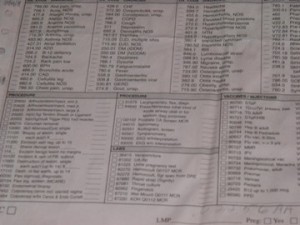 As I wrote a few days ago, the Medicare fee setting process of the RUC "bakes in" too much of what is common practice in medicine and makes it too hard to change. This is a major issue in primary care, where current low payments for evaluation and management services, based on often cursory visits, are insufficient to allow physicians to provide thorough services to complex older adults.
As I wrote a few days ago, the Medicare fee setting process of the RUC "bakes in" too much of what is common practice in medicine and makes it too hard to change. This is a major issue in primary care, where current low payments for evaluation and management services, based on often cursory visits, are insufficient to allow physicians to provide thorough services to complex older adults.
How are we supposed to fix this problem? There are at least three different kinds of payment fixes advocates for improved care are considering.
1. A common suggestion is creating new CPT (common procedural terminology) codes or paying for old codes that don't currently have a payment. For example, there are codes for telephonic consultation and for comprehensive geriatric assessment (S0250), but CMS (Centers for Medicare and Medicaid Services) does not pay anything for them. There could be a code for measuring orthostatic hypotension or for complete medication review. For an added degree of difficulty, non-physician health professionals like social workers and nurses looking at “their” services that are not being provided, wish that they could bill Medicare independently for things like care coordination or patient education. This approach has the virtue of working well in the more-for-more culture of Medicare fee-for-service. A specific procedure with an additional payment like one of these will get more assessment and management procedures done and billed. The downside is that this would increase total spending. It also reinforces the micro-managed approach to health care in which providers do that which they can code, no more and no less.
2. Another approach is to simply increase the payment for the existing "evaluation and management codes." This approach acknowledges that all of these services ARE supposed to be included in a professionally competent evaluation and management visit; we have just been dumbing such visits down, settling for lower quality services than we should. However, in a fee for service world, raising the payment for the service still doesn't mean that patients get more or better service. Simply increasing take-home pay would clearly look like a very attractive option to most primary care providers, who perceive themselves to be underpaid, underappreciated, and very overworked. But how would taxpayers know that the extra money would be well spent?
2a. A variant of #2 is to “group” codes into bundles. By finding all the codes that do or should co-occur in an episode of service and setting a rate for the group of services, one can provide a larger payment (albeit probably smaller than all the individual payments would have been) with less complex administration. I’m not sure if this really would work or have patient benefits, but CMS officials seemed pretty excited about it.
3. To really make options #2 and 2a work, we have to insist that the public and patients get some value for these global increases in payment. At the RUC briefing I attended last week, one of the most reassuring things I heard was that everyone, from RUC member to CMS leader, wanted to move from payment for service delivered towards an approach that rewards value created. In the medical home approach as currently designed by Medicare, additional payment for primary care services is provided through a global monthly case management fee that can be spent largely as a practice decides. However, to ensure that this spending produces value, it must increase patient satisfaction and meet other quality of care measures while simultaneously reducing spending in other parts of the health care system. This is a tall order, but one that certainly motivates additional investment in primary care services. To me, this seems like the best idea out there at the moment. What do you think? Any other suggestions?
